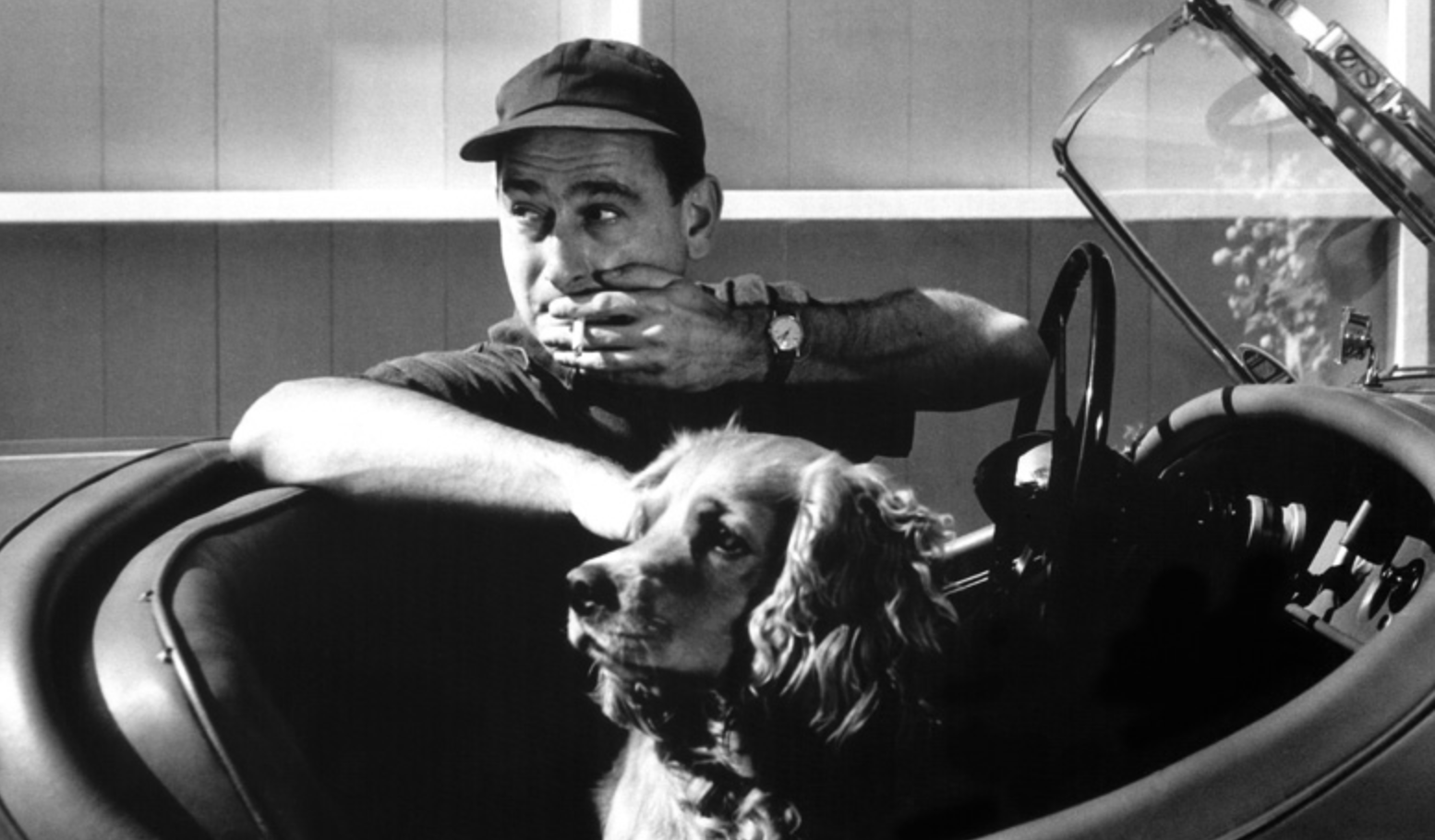Not everyone thinks of George Nelson when they think “Modernism”—but they should. Here’s why.
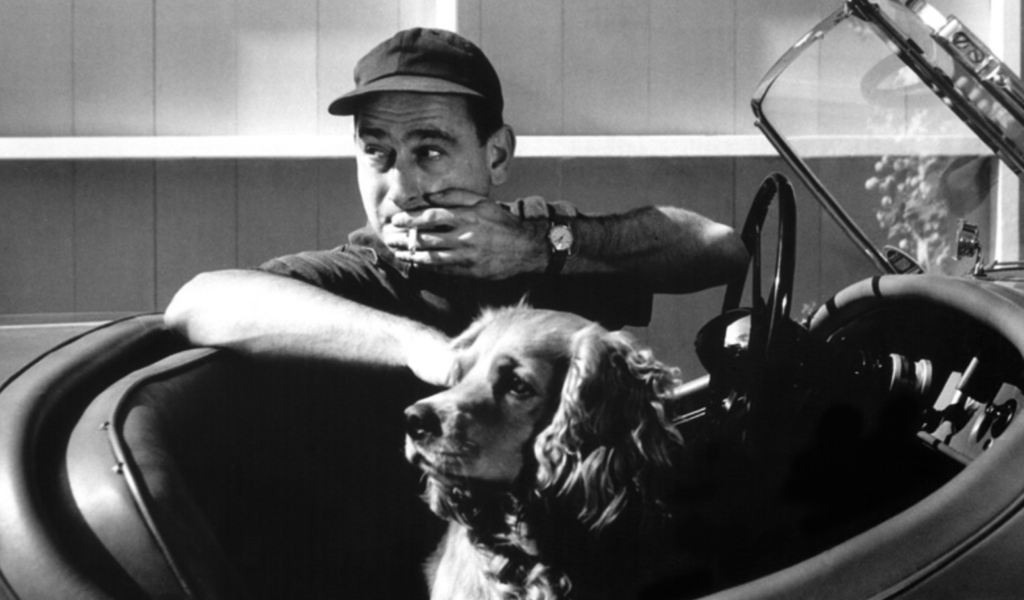
Looking at the outset of George Nelson’s career, few would have guessed that his legacy would crown him as one of the most influential individuals in Modernism—story has it that the young Ivy Leaguer stumbled into the Yale School of Architecture seeking shelter from the rain, and only then did he consider studying design. His legacy, though, would be one that touched nearly every corner of American Modernism as we think of it today.
After completing his two Bachelor’s degrees (one in architecture, the other in fine arts), Nelson went on to accept a traveling fellowship in Rome, which interfaced him with figures like Ludwig Mies Van Der Rohe, Walter Gropius, Le Corbusier, and Gio Ponti all of which he interviewed for Pencil Point, bringing the European vanguard to the attention of the magazine’s American readership.
At this point in his career, Nelson had devoted himself to writing, joining Architectural Forum as its first associate editor in 1935. For nearly a decade, Nelson’s post as an editor brought him face-to-face with many of the leaders of the Modernism movement in the U.S., and through these exchanges, his own stance in the design world began to solidify. For Nelson, the purpose of design was to improve the world in accordance with the laws of nature—and while he hadn’t yet done much designing himself, he was busy teasing out the theoretical details of architecture. In 1940, Nelson co-authored Tomorrow’s House with Henry Wright, and the book went on to be a great commercial success, introducing concepts like the “family room,” and more broadly assuming a solutions-based perspective for architectural design.
It wasn’t long before the book earned him the favorable attention of D.J. Depree, the chairman of American furniture manufacture. Despite Nelson’s inexperience in furniture design, Depree saw potential in the writer’s approach to the industry: solutions-oriented design with a practical lean. Nelson became the company’s Director of Design in 1947, under the condition that he be allowed to continue his work outside of the company.
From 1947 to 1972, Nelson oversaw the design department at Herman Miller, bringing in the icons that would shape some of the most memorable pieces of mid-century design, from Ray and Charles Eames and Harry Bertoia to Richard Schultz, Donald Knorr, and Isamu Noguchi.
Beginning in the mid-1950s, Nelson’s own design firm began its work in earnest, producing furniture and pioneering a ubiquitous incorporation of design, bringing that same consideration for pragmatism and aesthetics to advertising and marketing materials, image management, and graphic programs. His own firm incorporated in 1955, tapping many of the same designers from the Herman Miller roster for collaborations under George Nelson Associates, Inc.
It was during this period of Nelson’s life and career that many of his most iconic designs came onto the scene—many will be instantly familiar furniture silhouettes that perhaps you didn’t know sprung from George Nelson himself.
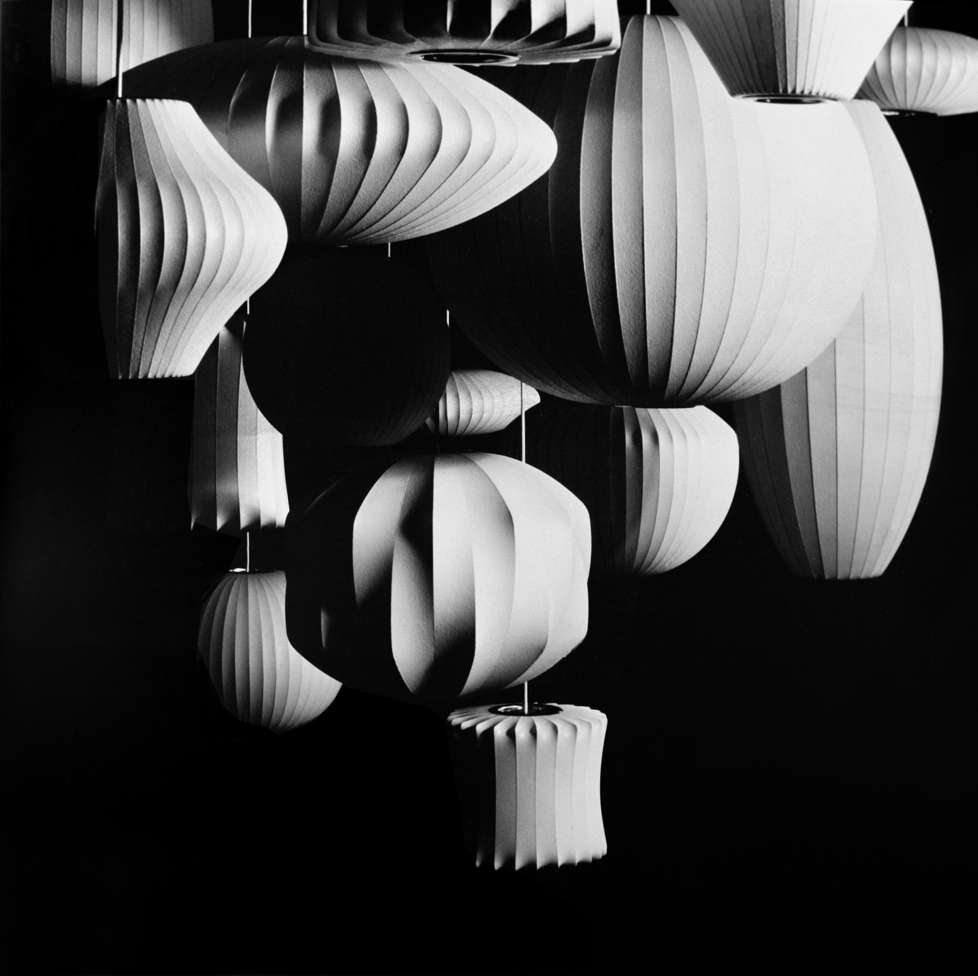
The Bubble Lamp (1952)
Designed by William Renwick of Nelson’s studio, the Bubble Lamp innovatively married an industrial ethos with top-notch aestheticism. Constructed from a steel wire frame, each lamp is then enveloped by a semi-translucent plastic spray that serves as the “shade.” The result: a lantern-like light whose soft glow radiates Modernism, able to shapeshift into several different forms to suit a variety of design schemes.
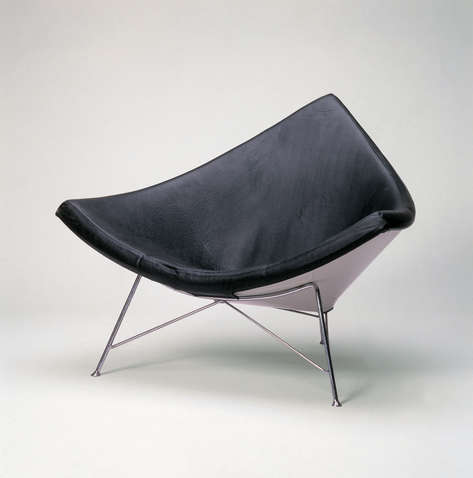
The Coconut Chair and Ottoman (1955)
As the name suggests, the appearance of this lounge chair evokes a shard of coconut, from the sturdiness of the plant’s hard exterior to the succulence of its fleshy interior. The chair’s design introduces excitement and animation to the humble triangle, creating ergonomic comfort from a geometric shape best known for its structural rigor.
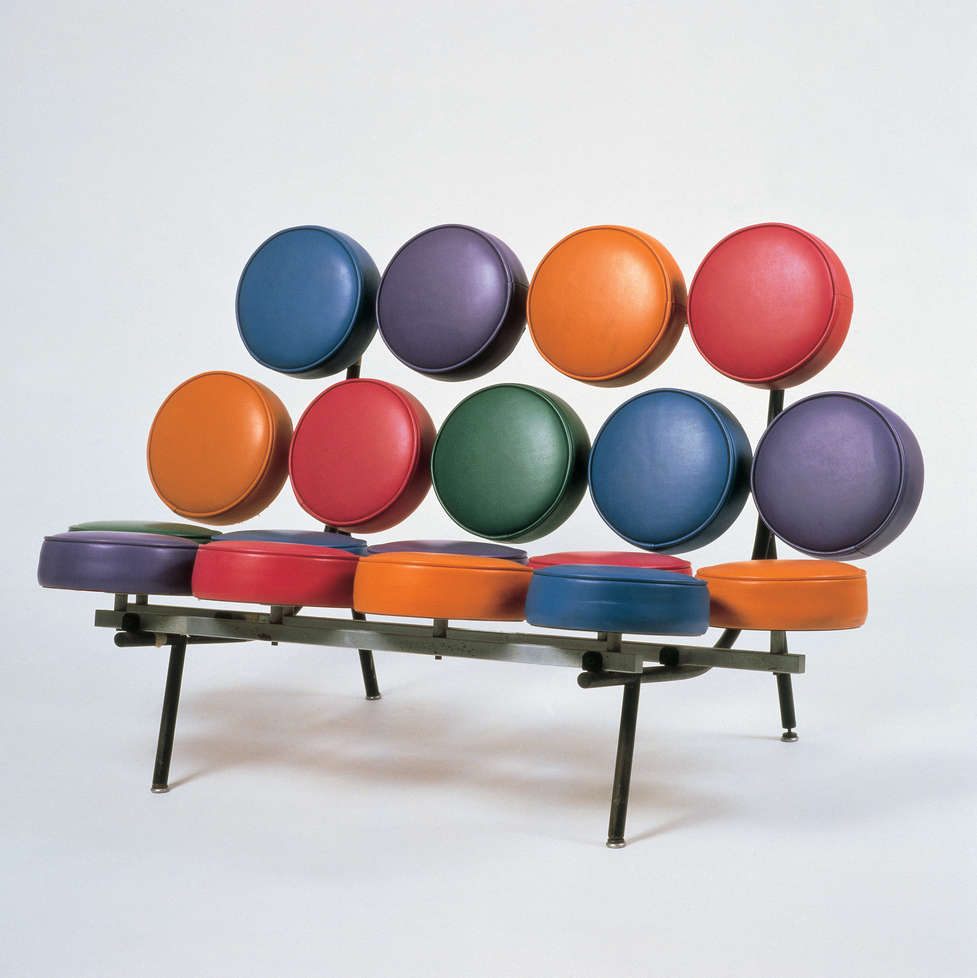
The Marshmallow Sofa (1956)
In Herman Miller’s original advertisements for the sofa, the text read: “18 disks of foam rubber neatly arranged on steel shafts support you comfortably on this Marshmallow Loveseat by George Nelson.” The sofa was debated for some time as to whether Nelson himself designed the piece—in fact, it was Irving Harper that is now credited with the design, but Nelson’s name and studio lives on in the piece’s present-day associations. While the piece quickly exceeded its intended price point, the Marshmallow Sofa just as soon became a staple in the Modern design vernacular.
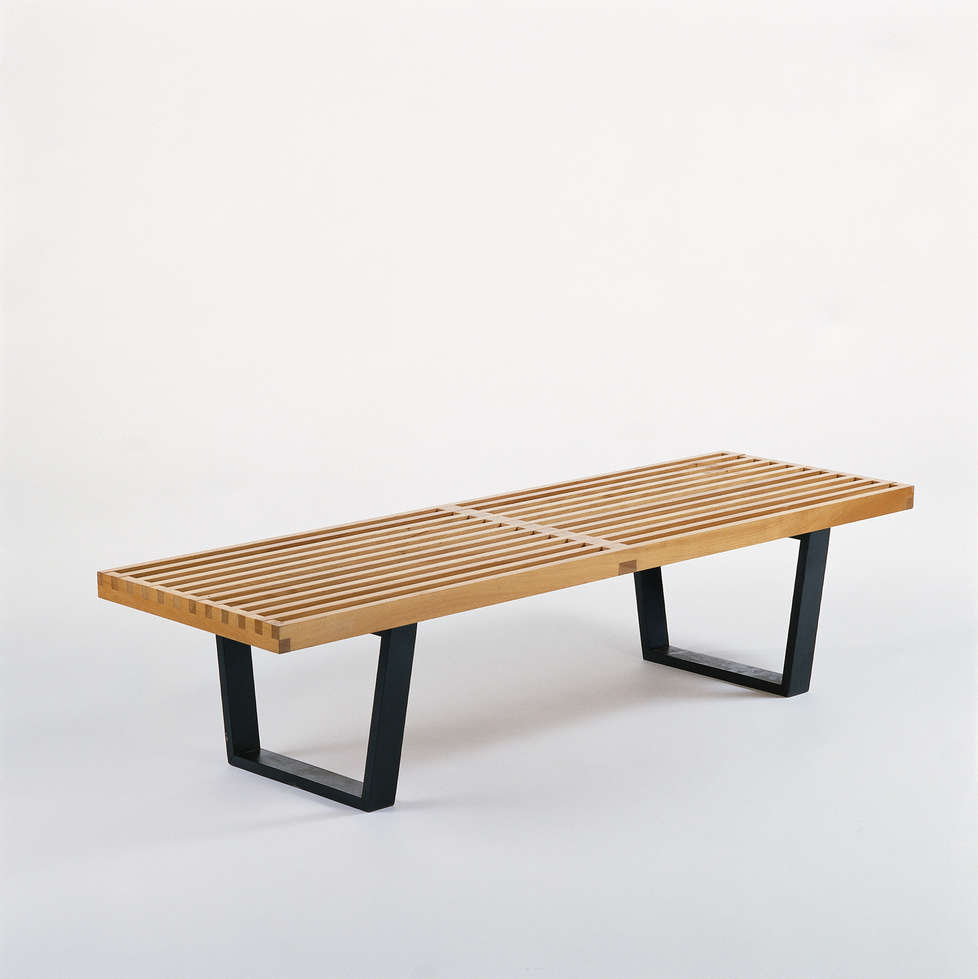
The Platform Bench (1945)
For all of the pop in Nelson’s oeuvre, the Platform Bench is an understated marvel that brings together wooden slats on a metal base to create a multi-purpose piece of furniture, whether it offered a seat to a passerby, a coffee table, or a statement in the entryway of a home. The piece was one of Nelson’s earliest designs, created for his office at Fortune magazine before making its way into his first furniture collection with Herman Miller.
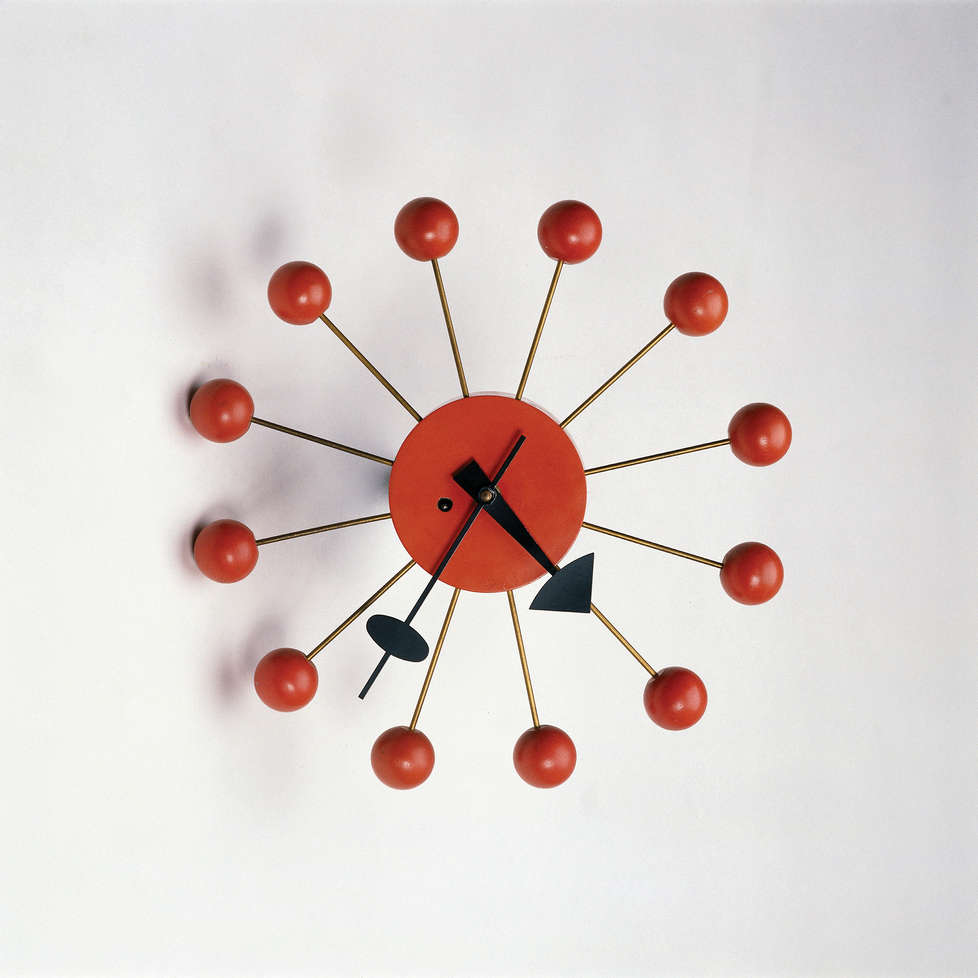
The Ball Clock (1949)
Also known as “4755,” this iconic clock design is a Mid-Century classic. Designed by Irving Harper, one of Nelson’s design associates, the clock takes a series of 12 brass spokes, capped in round balls that radiate from a center circle, finished with cartoon-like hands to indicate the time.
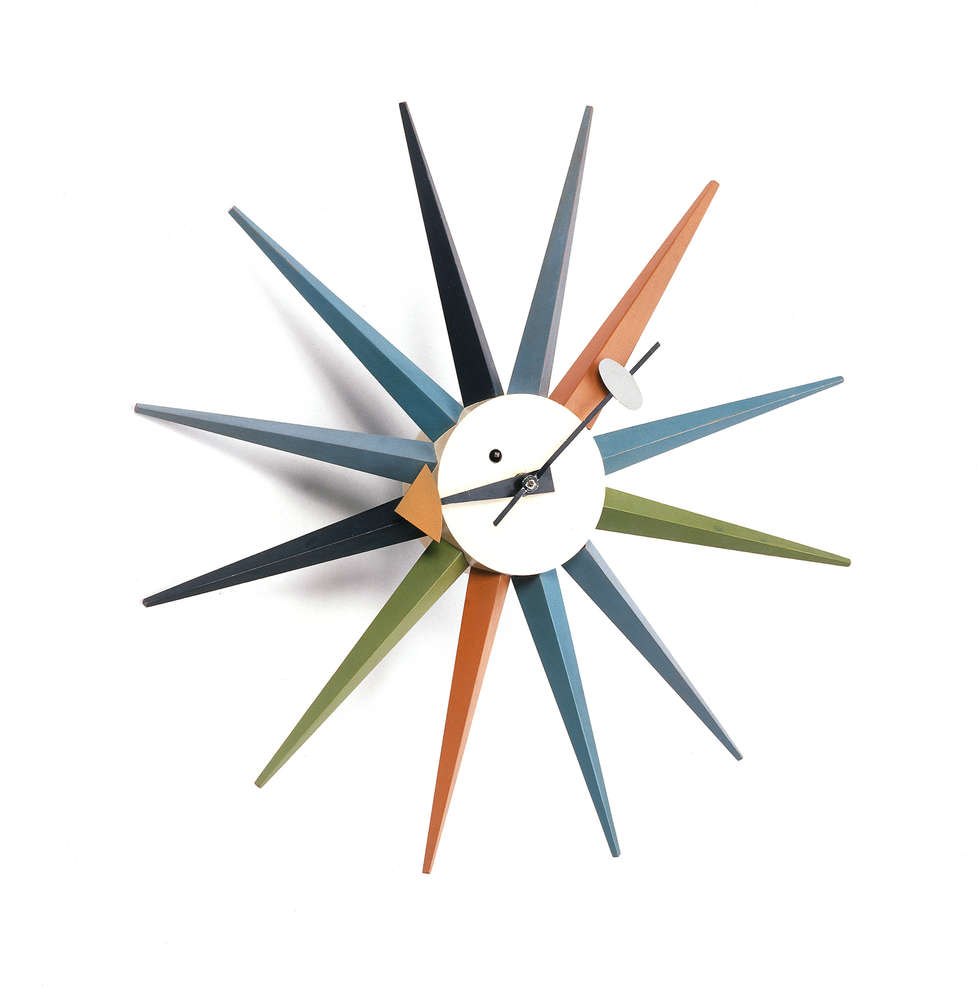
The Sunburst/Spoke/Spike Clock (1952–53)
The “2202” clock design, known by many names, consists of 12 wooden arms that come in a variety of colorways. Much like Nelson’s earlier clock design, the consideration for a new and exciting shape to the timepiece treads the boundary between functional object and sculptural artwork.
Nelson’s career spanned until the mid-1980s, when he closed his eponymous design studio to signal his retirement from the design industry, but he will be remembered for generations to come for the role he played in American Modernism, championing those principles in his leadership at Herman Miller, and in his own design practice as well. Nelson may not have been the eminent designer of the mid-century era, but as a connector of people and ideas, his influence was singular and lasting.
All images: Courtesy of the George Nelson Foundation.
